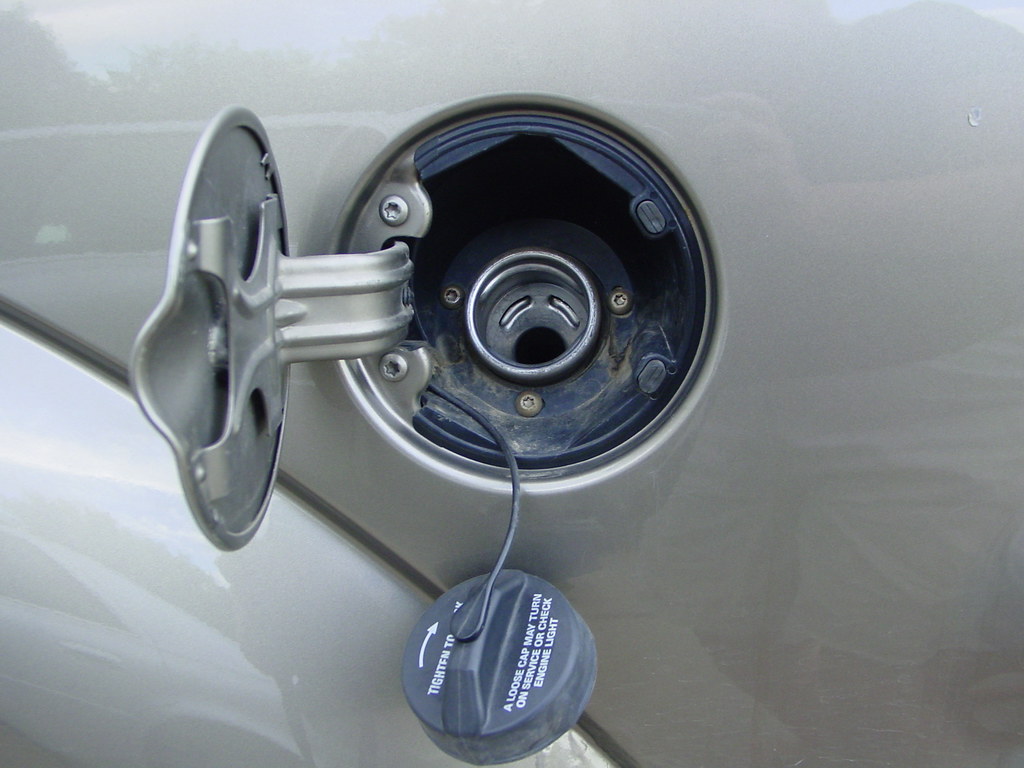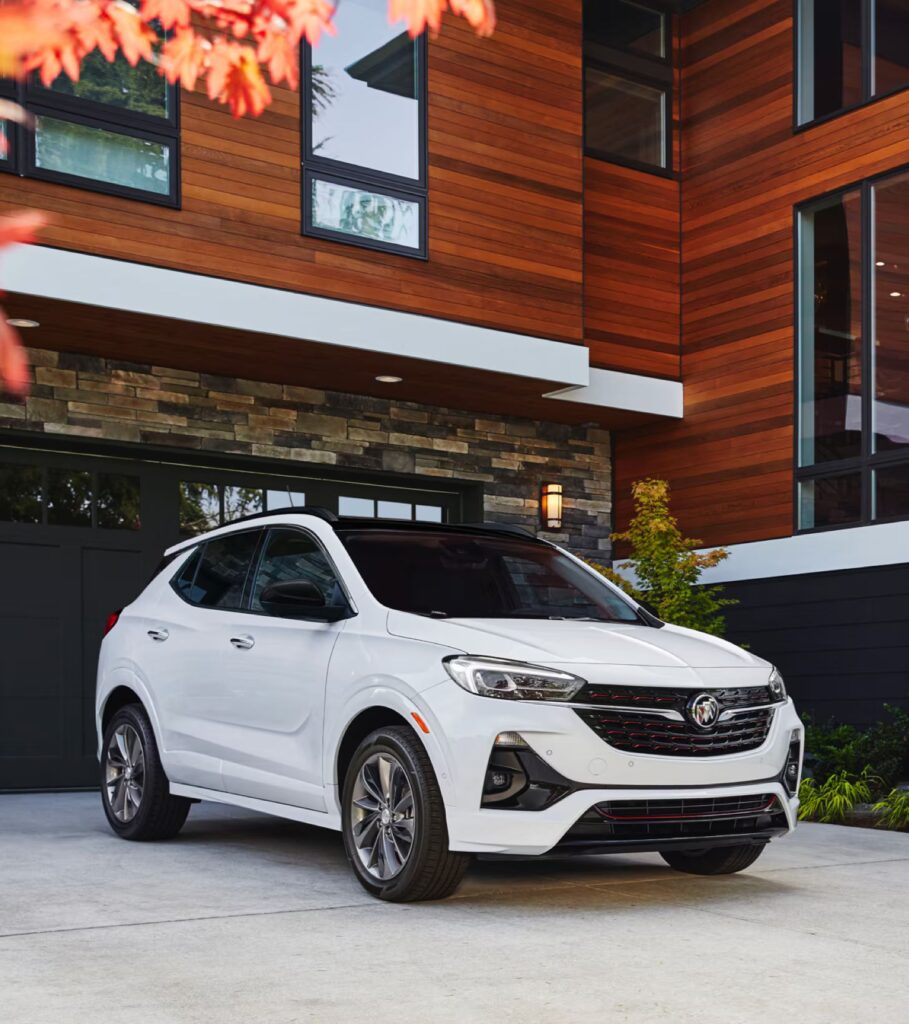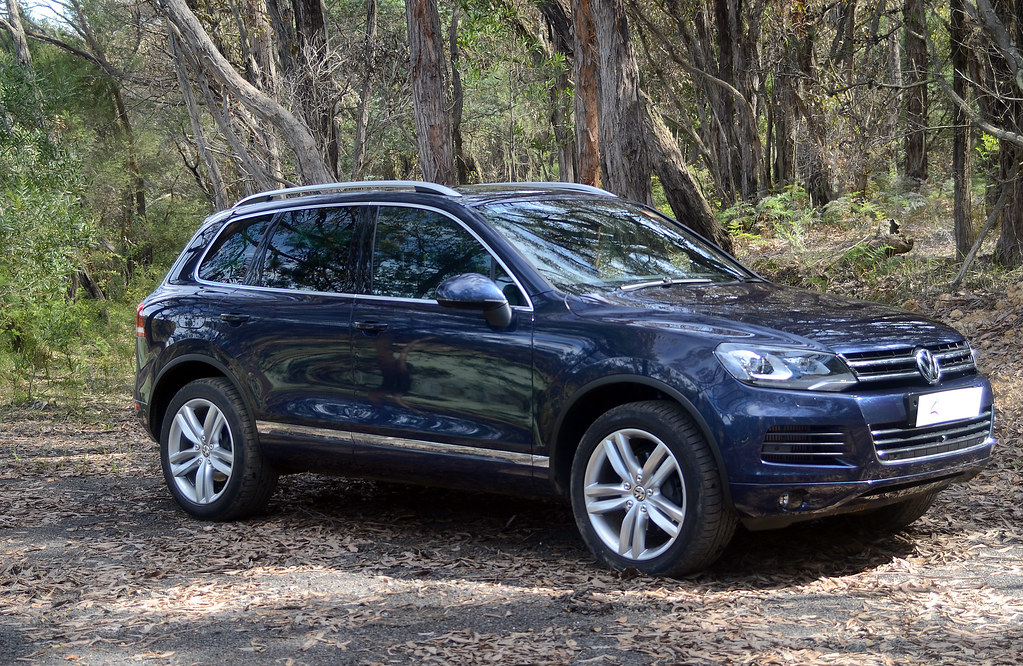
The allure of a gleaming luxury sedan or an opulent SUV in the American suburbs is undeniable. These vehicles, with their plush leather interiors, advanced driver-assist systems, and performance specs that turn heads, represent not just transportation but a significant symbol of success and sophistication. However, the initial purchase price, while substantial, is merely the tip of a much larger financial iceberg.
Many prospective luxury car owners, captivated by the prestige and comfort, often overlook a myriad of hidden, ongoing costs that can dramatically inflate the total cost of ownership. These aren’t just minor inconveniences; they are significant financial commitments that demand careful consideration. Understanding these expenses upfront is crucial for anyone dreaming of parking a high-end vehicle in their suburban driveway.
In this comprehensive guide, we’ll deep dive into the major expense categories, providing real numbers, comparisons, and actionable tips to help you manage or minimize these often-surprising costs. Our goal is to equip you with the knowledge to make informed decisions, ensuring your luxury car remains a source of pride rather than financial strain.
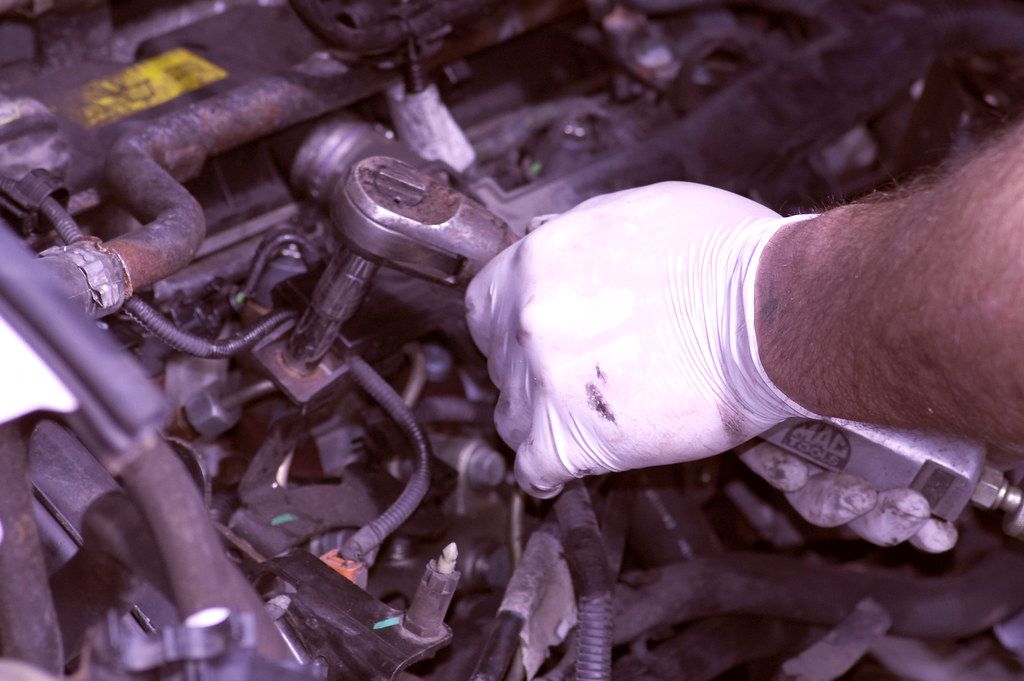
1. **Maintenance Costs: The Premium Price of Perfection**Luxury cars demand a level of care that goes far beyond what a standard vehicle requires. Regular servicing isn’t merely a recommendation; it’s a mandatory commitment to preserve performance and uphold warranty agreements. Manufacturers often mandate service intervals as frequent as every 5,000 to 10,000 miles, and skipping these appointments can lead to voided warranties and, eventually, far more expensive repairs.
Consider the routine oil change: a Mercedes-Benz or BMW may require synthetic oil changes costing $150 to $250 per visit. Compare this to the $50 to $75 typical for standard vehicles, and the difference becomes immediately apparent. These premium services often include comprehensive inspections, fluid top-ups, and crucial software updates, all designed to ensure the car operates at peak performance, but naturally, at a premium price point.
The parts themselves are another significant expense category entirely. Luxury vehicles are meticulously engineered with high-end materials and precision components, which are inherently costly. A single brake pad replacement for an Audi or Porsche, for instance, can easily run between $300 and $800, whereas a non-luxury car might incur costs of $100 to $300. Even seemingly mundane items like air filters or spark plugs are pricier due to their specialized design, with a cabin air filter for a Tesla Model S costing $50 to $100, compared to a Toyota Camry’s filter at $20 to $40. These premium parts are non-negotiable; using aftermarket alternatives can compromise performance and potentially void warranties.
Adding to these expenses is the specialized labor required. Luxury cars often necessitate technicians with brand-specific training and certifications, whose hourly rates typically range from $150 to $250 or even more. These highly skilled experts utilize proprietary diagnostic tools and adhere to meticulous procedures to ensure the vehicle meets stringent manufacturer standards. For example, resetting the service indicator on a Jaguar or Land Rover is not a simple DIY task; it requires specific software and specialized knowledge. Even minor repairs, like addressing a malfunctioning sensor, can consume more time and cost more due to the inherent complexity of these sophisticated systems.
To proactively manage these amplified expenses, prospective luxury car owners should budget diligently. Setting aside $1,000 to $2,000 annually for maintenance is a prudent starting point, though it’s wise to anticipate that costs can escalate as the vehicle ages and accumulates mileage. While extended warranties or service plans offer a measure of peace of mind, they also come with their own premiums. Researching reputable independent shops with proven luxury car expertise can sometimes yield savings, but always verify their credentials and ensure they use OEM-approved parts. Above all, strictly adhering to the manufacturer’s maintenance schedule is paramount—it’s the most effective strategy to preserve the vehicle’s value and avert catastrophic failures that would dwarf the cost of routine service.
Read more about: The Moment of Regret: 14 Compacts Drivers Wished They Never Saw the Price Tag At the Dealer

2. **Insurance Premiums: Protecting Your Prized Possession at a Price**Owning a luxury car inherently demands premium insurance coverage, and the justifications for these higher rates are as high-end and complex as the vehicles themselves. The fundamental reason is the significantly higher value of these cars compared to their standard counterparts, with many starting well into the six-figure range. This elevated value directly translates into higher insurance premiums, as insurers must account for the potentially astronomical cost of replacing or repairing such an expensive asset.
For example, a top-tier luxury sedan like a BMW 7 Series or a Mercedes-Benz S-Class, which can easily exceed $100,000 in purchase price, will invariably incur comprehensive coverage costs that are two to three times more expensive than those for a mid-range vehicle. Insurers calculate the risk based on the potential payout, and with luxury cars, that potential payout is substantially larger, justifying the steeper premiums required to cover such a valuable asset.
The intricate complexity and advanced sophistication of luxury car components further exacerbate insurance costs. These vehicles are often equipped with cutting-edge technology, bespoke materials, and specialized parts that are exceedingly costly to repair or replace. Consider a minor fender bender involving a luxury SUV fitted with carbon fiber body panels and adaptive cruise control systems; the resulting repair bills could easily surpass $10,000. Insurance companies meticulously factor these potential costs into their premium calculations, ensuring they possess adequate funds to cover the significant expenses associated with restoring these high-performance machines to their original condition. A revealing study by the Insurance Institute for Highway Safety (IIHS) underscored this reality, finding that repair costs for luxury vehicles are, on average, a striking 30% higher than those for non-luxury models.
The heightened risk of theft is another critical factor contributing to elevated insurance premiums for luxury cars. Due to their high resale value and widespread desirability, these vehicles are prime targets for thieves. Data from the National Insurance Crime Bureau (NICB) consistently lists luxury brands such as Mercedes-Benz, BMW, and Tesla among the most frequently stolen vehicles. Insurers actively mitigate this amplified risk by charging higher premiums and frequently mandating additional coverage options, including comprehensive and gap insurance. Comprehensive coverage, which specifically protects against theft, vandalism, and natural disasters, can add hundreds of dollars annually to a luxury car owner’s insurance bill, serving as a vital safeguard for a highly coveted asset.
To effectively manage these substantial insurance costs, luxury car owners are well-advised to proactively shop around for insurance providers that specialize in high-end vehicles. Some insurers offer bespoke policies, such as agreed-upon value coverage, which guarantees the full value of the car is paid out in the unfortunate event of a total loss. Furthermore, installing advanced anti-theft devices, including GPS trackers and immobilizers, can often lead to reduced premiums by lowering the perceived risk to the insurer. Owners should also explore opportunities to bundle their insurance policies—for instance, combining auto with home insurance—or maintain an impeccable driving record to qualify for various discounts. While the insurance premiums for luxury cars are undeniably steep, they represent a non-negotiable and essential investment to protect both the substantial financial outlay and the inherent emotional value of these automotive masterpieces.
Read more about: Beyond the Badge: Uncovering the True Financial Realities of Owning a Classic Porsche 911
3. **Fuel Consumption: The Thirsty Reality of High Performance**Luxury cars are almost universally synonymous with powerful engines, and that power, while delivering an exhilarating driving experience, typically comes at a considerable cost in terms of fuel consumption. These robust engines, engineered for exceptional performance, are notoriously thirsty. For instance, a high-end V8 engine can effortlessly consume between 15 to 20 liters of fuel per 100 kilometers in typical city driving conditions. This stands in stark contrast to the 8 to 10 liters consumed by an average mid-range sedan covering the same distance.
This significant disparity in fuel consumption translates directly into considerably higher expenses at the pump, making fuel costs a truly substantial and ongoing consideration for any luxury car owner. To put this into a tangible financial perspective, let’s consider the annual fuel expenditure. If a luxury car averages 15 liters per 100 kilometers and is driven approximately 20,000 kilometers annually, it would require a hefty 3,000 liters of fuel over the course of a year. At an average fuel price of $1.50 per liter, this amounts to a staggering $4,500 annually. In sharp contrast, a comparable mid-range sedan, with an average consumption of 9 liters per 100 kilometers over the same distance, would cost approximately $2,700. This striking $1,800 difference vividly underscores the profound financial impact of owning a luxury vehicle equipped with a larger, performance-oriented engine.
However, it’s not exclusively about the sheer size of the engine. Many contemporary luxury cars incorporate highly advanced technologies designed to mitigate excessive fuel consumption. These innovations include sophisticated turbocharging systems, efficient hybrid powertrains, and cylinder deactivation features. For example, some luxury models featuring V8 engines possess the capability to temporarily shut down four cylinders during periods of low-load driving, effectively operating as a V4 engine to conserve fuel. While these technological advancements certainly help to improve efficiency, they do not entirely eliminate the inherent inefficiency that comes with demanding high performance from larger engines. Owners must therefore still account for consistently higher fuel costs, particularly if their driving habits frequently involve stop-and-go traffic or extensive long-distance travel.
For individuals contemplating the purchase of a luxury car, it is absolutely essential to thoroughly factor fuel expenses into the comprehensive calculation of the overall cost of ownership. Practical strategies to manage these costs include diligently monitoring driving habits to minimize unnecessary acceleration and abrupt braking, judiciously utilizing cruise control on highways to maintain a steady and fuel-efficient speed, and intelligently planning routes to proactively avoid heavy traffic congestion. Additionally, ensuring the vehicle is consistently well-maintained—which encompasses critical tasks such as verifying proper tire pressure and adhering to regular engine tune-ups—can significantly optimize fuel efficiency. While luxury cars undeniably offer unparalleled driving experiences characterized by power and refinement, their considerable fuel consumption necessitates a thoughtful, proactive approach to both budgeting and usage.
Read more about: Nine Unapologetic Beasts: The Most Fuel-Inefficient Engines to Ever Roam the Road

4. **Depreciation: The Rapid Decline in Value**Luxury cars are notoriously characterized by their steep depreciation rates, often losing a significant portion of their value within a remarkably short period after the initial purchase. This phenomenon is far more than a minor financial setback; it represents a substantial and often underestimated expense that every prospective luxury car owner must meticulously consider. For instance, a high-end vehicle initially priced at $100,000 can realistically depreciate by as much as 40% in its first year alone, which translates to a shocking loss of $40,000 in value. This rapid and substantial decline in value is primarily driven by factors such as market saturation, swift technological advancements, and constantly shifting consumer preferences, collectively rendering depreciation one of the most critical and impactful expenses associated with luxury car ownership.
To effectively mitigate the profound financial impact of rapid depreciation, it is absolutely essential to adopt a highly strategic and informed approach to both purchasing and maintaining your luxury vehicle. One particularly practical and astute tip is to seriously consider buying a pre-owned luxury car that is already two to three years old. By this age, the vehicle will have typically undergone its most significant depreciation, allowing you the distinct advantage of enjoying the benefits of luxury ownership at a considerably reduced fraction of the original sticker price. Furthermore, opting for specific models known for their robust reputation for retaining value, such as certain Porsche or Mercedes-Benz vehicles, or notably, Lexus models, can further minimize your potential financial losses. Consistent regular maintenance, coupled with meticulously keeping detailed service records, can also play a crucial role in preserving the vehicle’s resale value, thereby ensuring you recoup a greater portion of your initial investment when the time eventually comes to sell or trade in.
An insightful comparison of depreciation rates across various luxury brands reveals often stark and critical differences in value retention. For example, while a BMW 7 Series might experience a depreciation of approximately 50% over its first five years, a Lexus LS typically retains closer to a more favorable 60% of its original value over the identical period. This significant disparity emphatically highlights the paramount importance of thorough research and the astute selection of a vehicle with a proven, strong track record of slower depreciation. Utilizing reputable online tools and valuable resources, such as Kelley Blue Book or Edmunds, can provide invaluable insights into the specific depreciation trends of particular luxury models, thus empowering you to make a more informed and financially prudent decision that meticulously aligns with your long-term financial goals and expectations.
Ultimately, it is crucial to reframe your perception of depreciation—not as an absolute loss, but rather as an unavoidable cost of the unparalleled experience of luxury. Unlike more tangible and practical expenses such as fuel or insurance premiums, depreciation is an inherent and deeply embedded aspect of owning a high-end vehicle that offers an unparalleled combination of performance, comfort, and undeniable status. By judiciously budgeting for this inevitable expense and cultivating a comprehensive understanding of its underlying drivers, you can more fully and unreservedly enjoy the myriad benefits of luxury car ownership without being blindsided or financially distressed by unexpected and significant value declines. Think of it as the justifiable price of indulgence, a necessary trade-off for the exclusive privilege of driving a vehicle that truly stands out, both in terms of its sophisticated style and its inherent, superior substance.
Read more about: Your Definitive 2025 Guide: What to Check When Buying a Used Electric Vehicle
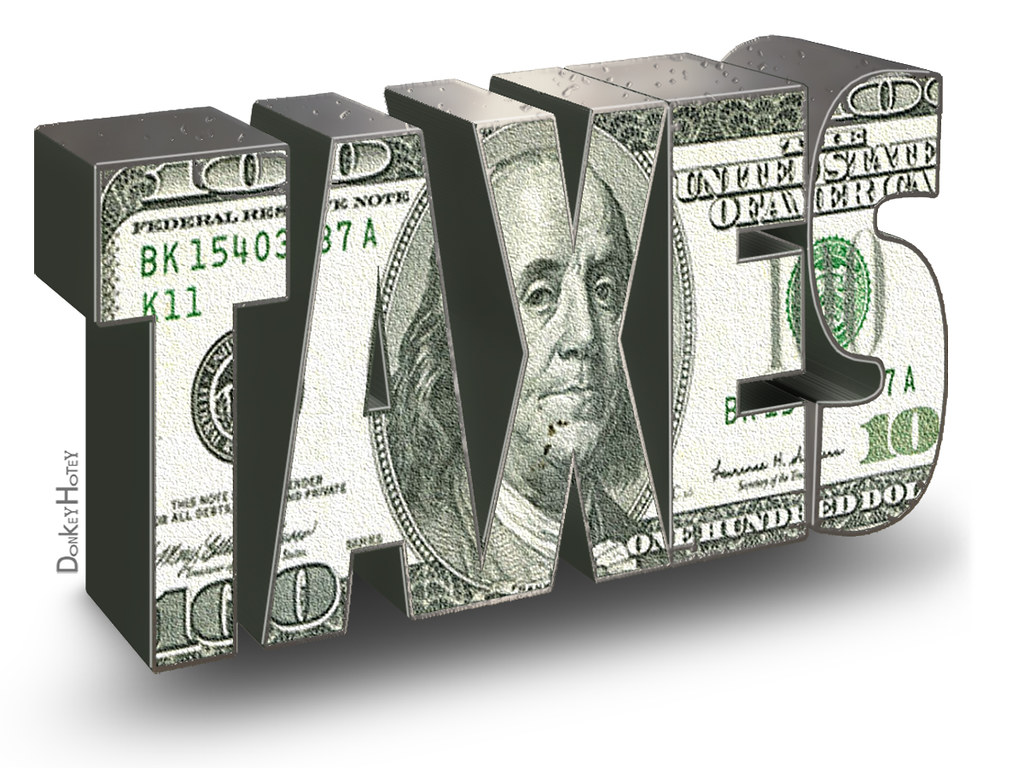
5. **Taxes & Fees: The Government’s Share of Luxury**Owning a luxury car extends beyond the initial sticker price; governments across various regions have ingeniously established mechanisms to ensure that high-end vehicle ownership comes with an additional premium in the form of taxes and fees. Elevated registration fees are often a primary starting point. In a state like California, for example, the annual registration fee is meticulously calculated based on the vehicle’s market value. Luxury cars frequently reach the maximum rate, which can be around 1.15% of the vehicle’s market value. This implies that a $100,000 luxury car could easily incur over $1,150 annually in registration fees, a stark contrast to the mere few hundred dollars typically associated with a standard vehicle. These fees are strategically designed to offset the perceived environmental and infrastructural impact of high-value vehicles, but they undeniably contribute significantly to the ongoing cost of ownership.
Luxury taxes take this concept a step further, directly targeting high-end purchases. In certain countries, such as Singapore, the Additional Registration Fee (ARF) can astonishingly reach up to 220% of the car’s Open Market Value (OMV), effectively tripling the overall cost of a luxury vehicle. Even in regions without explicitly named luxury taxes, value-added taxes (VAT) are often applied at higher rates for expensive goods. For instance, within the European Union, VAT on cars typically ranges from 19% to 25%, but the real financial burden is acutely felt when this percentage is applied to a six-figure vehicle. These taxes are not solely revenue generators; they also serve as policy instruments intended to discourage excessive consumption and to alleviate traffic congestion, particularly in densely populated urban areas.
Import duties introduce yet another layer of financial complexity, particularly pertinent for luxury cars sourced from overseas manufacturers. In India, for example, imported cars can face a formidable customs duty of up to 100%, which is subsequently followed by additional charges such as a social welfare surcharge and a Goods and Services Tax (GST), collectively pushing the total tax burden to well over 200% of the car’s intrinsic value. Even in the United States, where import duties are comparatively lower, the 2.5% tariff imposed on imported cars can still add thousands of dollars to the final cost of a luxury vehicle. For dedicated automotive enthusiasts seeking rare or exotic foreign models, these cumulative duties can unfortunately transform a dream purchase into an unanticipated financial nightmare.
The cumulative impact of these various taxes and fees results in a substantial escalation in the total cost of ownership. A luxury car initially priced at $200,000, especially when purchased in a region with high tax rates, could realistically incur an additional $100,000 in taxes and fees before it even embarks on its first journey. Prospective buyers must diligently factor these substantial costs into their budget planning, moving beyond merely considering the initial purchase price. A practical and highly recommended tip is to thoroughly research regional tax structures well in advance of making a purchase, as some areas may offer specific incentives or lower rates for certain categories of vehicles. For example, environmentally friendly electric luxury cars may qualify for valuable tax breaks in regions with strong ecological mandates, such as Norway or California.
Ultimately, taxes and fees represent an inescapable and integral reality of luxury car ownership. However, by comprehensively understanding their intricate structure and regional variations, buyers can navigate this financial minefield much more effectively. After all, the profound joy and prestige of driving a luxury car should ideally not be overshadowed by a barrage of unexpected and substantial costs—though this often becomes the case unless one is meticulously prepared and fully informed.

6. **Expensive Repairs: When the Unexpected Happens**While routine maintenance covers scheduled servicing and the replacement of wear-and-tear items, the category of “expensive repairs” refers specifically to the unscheduled, often unexpected failures of complex systems and specialized components that are characteristic of luxury vehicles. When something goes wrong in a high-end car, the financial repercussions are typically far from cheap, and dealers may not always fully prepare you for the severity of these potential costs.
Luxury vehicles are designed with sophisticated electronics, advanced materials, and intricate engineering, which means any malfunction requires highly specialized diagnostic tools and expertise. A seemingly minor issue, such as a broken taillight, a malfunctioning sensor in an advanced driver-assistance system, or a glitch in a complex infotainment unit, can swiftly escalate into a major expense. The replacement parts are frequently proprietary, sometimes imported, and often take longer to arrive, adding to both the cost and inconvenience.
Consider a minor fender bender involving a luxury SUV equipped with carbon fiber body panels and adaptive cruise control systems. Repair bills in such scenarios can easily exceed $10,000 due to the high cost of specialized materials and the precise, expert labor required to restore these advanced components to factory specifications. The complexity of these systems means that even a small bump can lead to a costly repair, especially when exclusive or hard-to-find parts are involved. These aren’t just parts; they are often integrated systems that require recalibration and specialized software to function correctly.
Beyond accident-related damage, the sophisticated mechanical and electronic components have their own failure points. Features like adjustable air suspension, soft-close doors, or luxury entertainment systems, while enhancing the driving experience, are also potential sources of significant repair bills if they fail. The diagnostic process itself for these high-tech issues is often more intricate and time-consuming, leading to higher labor costs even before a single part is replaced. This is why many owners are caught off guard when repair bills creep up, highlighting the inherent difference between the upkeep of a standard vehicle and the premium requirements of a luxury car.
To mitigate the shock of unexpected repairs, it’s crucial for luxury car owners to have a robust emergency fund or to seriously consider extended warranty options, particularly as the manufacturer’s warranty approaches expiration. While extended warranties come with their own premiums, they can provide invaluable protection against the potentially staggering costs associated with major component failures in these complex machines. Understanding that luxury means more complex, and complex means more expensive to fix, is a fundamental lesson in managing the true financial commitment of luxury car ownership.
Read more about: Empower Your Auto Repairs: 14 Essential Questions to Ask Your Mechanic for Confidence and Savings

7. **Costly Tire Replacements: More Than Just Rubber on the Road**Luxury vehicles often demand high-performance tires, which are a specialized component far removed from standard options. These tires are meticulously engineered to complement advanced suspension and powerful engines, providing superior grip, responsiveness, and a quieter ride. This enhanced performance, however, introduces a significant financial cost that many owners tend to underestimate until replacement becomes necessary.
The expense doesn’t just come from the brand name; it’s rooted in the intricate technology and materials utilized. High-performance tires frequently use softer rubber compounds for maximum traction, meaning they wear out faster than more durable conventional tires. Additionally, luxury cars often feature larger wheels and low-profile tires, which are inherently more expensive to produce and replace. A single high-performance tire for a luxury sedan can cost $300 to $500, with a full set easily reaching $1,200 to $2,000 or more, excluding installation. This contrasts sharply with a typical set for a standard vehicle, which might cost $400 to $800 total.
The need for specific tire types—like dedicated summer and winter sets for optimal safety—can further inflate annual tire expenditure. Aggressive driving, while exhilarating, also accelerates wear, necessitating more frequent replacements. Moreover, the specialized nature of these tires often requires precise balancing and alignment by trained technicians, adding to labor costs. Neglecting worn tires not only compromises safety but can also lead to uneven wear on suspension components, potentially resulting in even costlier repairs down the line.
To manage these substantial expenses, proactive budgeting is essential. Owners should research tire options balancing performance, durability, and cost. Exploring reputable mid-range premium brands that meet OEM specifications can offer good performance without the top-tier price. Regular checks of tire pressure, rotations, and proper wheel alignment are crucial preventative measures to extend tire life. Budgeting a significant annual amount ensures this critical safety and performance component doesn’t become an unforeseen financial burden.
Read more about: Beyond the Sticker Price: Uncovering the True Financial Commitment of Car Ownership

8. **Specialized Cleaning and Detailing: The True Cost of Showroom Shine**Maintaining a luxury car’s pristine appearance goes far beyond typical car washes. These vehicles feature premium materials like fine leather, exotic wood veneers, Alcantara, and sophisticated metallic trims, all requiring specialized care to preserve their original condition. The intricate design and high-quality finishes mean standard cleaning methods can actually cause damage, highlighting the necessity of professional cleaning and detailing services.
Unlike a basic $10-$30 car wash, a comprehensive professional detailing for a luxury vehicle can range from $200 to $500 for a package covering interior and exterior, with advanced services like ceramic coatings potentially costing thousands. These services employ specialized tools, pH-neutral chemicals, and expert techniques tailored to delicate surfaces. High-quality leather, for instance, demands specific conditioners to prevent drying and cracking, while advanced paint finishes benefit from expensive ceramic coatings offering superior protection and shine.
This meticulous care isn’t just about aesthetics; it significantly influences the car’s resale value. A well-maintained exterior and interior are crucial for a luxury vehicle to command a strong price on the used market. Buyers expect a condition reflecting the car’s premium status; visible wear or damage from improper cleaning can drastically diminish its appeal and value. Thus, regular professional detailing, perhaps monthly or quarterly, becomes a practical investment, rather than a mere indulgence.
Even at-home maintenance for a luxury car involves a higher commitment to specialized products. Owners often invest in premium soaps, microfiber towels, leather care kits, and specialized wheel cleaners, all pricier than generic alternatives. The time and effort for proper cleaning also represent an indirect cost. Therefore, budgeting for professional services and high-quality products is essential to maintain the coveted showroom condition, ensuring the vehicle remains a source of pride, not a fading investment.
Read more about: Unlock Top Dollar: The Ultimate Popular Mechanics Guide to Boosting Your Car’s Resale Value Through Smart Detailing
9. **Advanced Technology Repairs: The Smart Car’s Price Tag**Modern luxury vehicles are essentially rolling computers, laden with advanced technologies enhancing safety, convenience, and the driving experience. From sophisticated infotainment systems with large touchscreens and voice command, to advanced driver assistance systems (ADAS) like adaptive cruise control and lane-keeping assist, these features define luxury. While impressive when flawless, these integrated electronic and software systems are incredibly costly to repair if they malfunction.
Unlike mechanical repairs, which often involve simple part replacement, issues with advanced technology are far more intricate. They require specialized diagnostic software, proprietary tools, and technicians with specific brand certifications. A glitch in navigation, a faulty ADAS sensor, or a malfunction in an autonomous driving feature is not a quick fix. These interconnected systems demand extensive troubleshooting, making diagnosis itself an expensive process, even before parts are replaced or software updated.
Replacement components for these high-tech systems are almost exclusively OEM and carry premium prices. A radar sensor for adaptive cruise control, a camera module for a 360-degree view, or an entire infotainment display can each cost thousands. Post-replacement, many systems require recalibration using factory-specific software, further adding to labor costs. For example, a windshield replacement in an ADAS-equipped car often necessitates recalibration of its front-facing camera by a specialist.
The rapid pace of automotive innovation means older technology can quickly become harder and more expensive to service. New vehicle generations introduce more advanced systems, and parts for older tech might be phased out. Consequently, budgeting for a luxury car must acknowledge that its desirable cutting-edge technology is also a potential source of substantial, unanticipated repair bills. A robust emergency fund or a comprehensive extended warranty specifically covering complex electronics is not merely recommended, but an essential consideration for maintaining peace of mind.
Read more about: The Road to 100,000+ Miles: Essential Lessons from Long-Term Single-Car Ownership
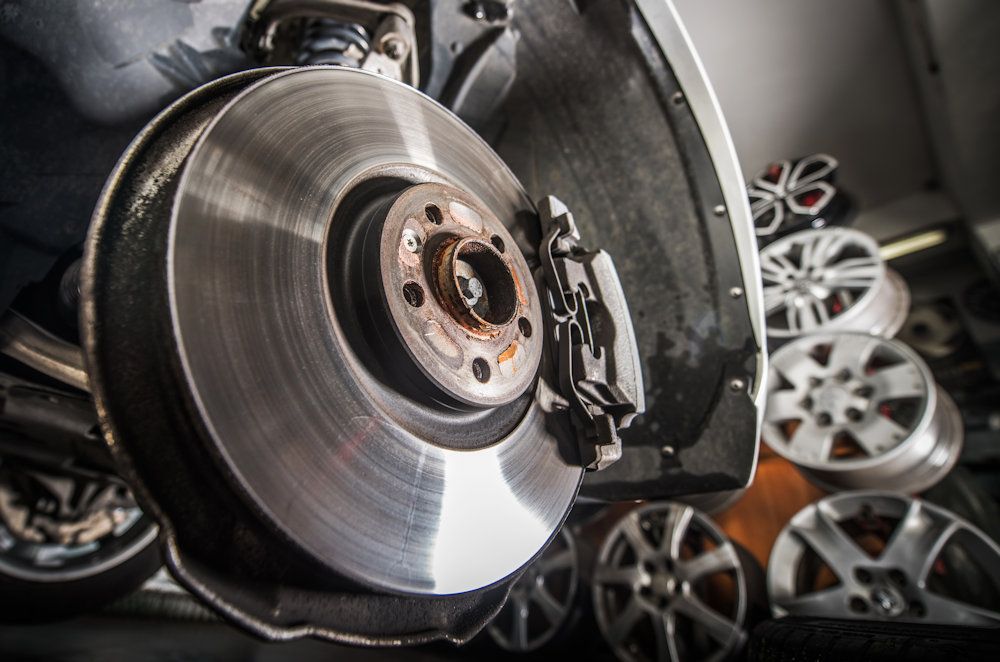
10. **Warranty Considerations: Beyond the Initial Coverage**The initial manufacturer’s warranty provides a crucial safety net for luxury car owners, covering most defects for a specified period. This offers significant peace of mind, especially given the high cost of specialized components and labor. However, a critical financial consideration emerges when this factory warranty expires, marking the point where the potential for unexpected and substantial repair bills significantly increases.
Once the manufacturer’s warranty ends, every repair cost, from a minor electronic issue to a major powertrain problem, becomes the owner’s responsibility. The inherent complexity and premium components of luxury cars mean these out-of-pocket expenses can quickly escalate. For instance, replacing a transmission in a high-performance luxury sedan or addressing a critical air suspension failure could easily cost $5,000 to $15,000 or more, highlighting the importance of proactive financial planning.
This is precisely where extended warranties or service packages become a notable consideration. While they come with their own upfront premiums, often ranging from several thousand to over $10,000 for comprehensive coverage, they can provide invaluable protection against potentially staggering costs. It is crucial, however, to meticulously examine the terms and conditions of any extended warranty, scrutinizing covered components, exclusions, and deductible structures to ensure adequate protection.
Prospective buyers should weigh the cost of an extended warranty against their risk tolerance, the car’s reliability, and their anticipated ownership period. For those planning to keep their luxury vehicle beyond the factory warranty, or for models with known expensive long-term repair risks, an extended warranty can be a sensible investment. It transforms unpredictable, potentially catastrophic repair costs into a more manageable, predictable premium, allowing owners to enjoy their luxury car with greater financial confidence.
Read more about: Beyond the Showroom Shine: Identifying the Worst Financial Mistakes When Customizing a New Car

11. **Technological Obsolescence: The Fast Lane to Outdated Features**In the rapidly evolving automotive world, luxury cars, ironically, can fall victim to their own innovation. While cutting-edge features attract buyers, the constant stream of newer, more advanced systems can quickly render existing technology obsolete. This impacts both the ownership experience and, critically, the vehicle’s resale value, a concern distinct from general depreciation.
Luxury manufacturers continuously race to offer the latest in infotainment, driver-assist capabilities, connectivity, and autonomous driving functions. A vehicle purchased today with state-of-the-art features might be a few years behind when the next model year brings radically improved interfaces or more robust ADAS suites. While the car’s core mechanics remain sound, used luxury buyers often prioritize current technology, diminishing the appeal of older models.
This rapid technological churn directly affects resale desirability and value retention. Unlike basic features, advanced software-driven systems are often difficult to upgrade in older models. While some manufacturers provide over-the-air updates, fundamental hardware limitations or significant architectural changes can prevent older vehicles from accessing the newest innovations. This “left behind” perception can be a major deterrent for luxury buyers seeking the forefront of automotive tech.
Moreover, reliance on complex software systems means older operating systems or hardware can become challenging and expensive to service. Updates may become less frequent, or specialized parts for older tech might be phased out, potentially increasing future repair costs. Savvy luxury car owners must understand that significant investment in advanced technology at purchase can lead to a faster rate of perceived aging and value erosion. Budgeting for this rapid evolution, perhaps by accepting shorter ownership cycles or choosing models with slower tech cycles, offers a pragmatic approach.

12. **Opportunity Costs and Financing Implications: The Unseen Financial Trade-offs**Beyond direct expenditures, luxury car ownership presents significant, often unquantified, opportunity costs and financing implications. Opportunity cost is the value of the next best alternative forgone when a choice is made. For luxury cars, this involves considering how else the substantial capital—both purchase price and ongoing expenses—could have been utilized, had a more economical vehicle been chosen.
For example, spending an extra $50,000 on a luxury car instead of a capable standard vehicle means that capital could have been invested in the stock market or retirement fund. Conservatively invested at 5% annually, that $50,000 could grow to over $63,000 in five years. This unseen return on investment represents a direct financial trade-off for the prestige and performance of a luxury vehicle, a cost rarely displayed on a balance sheet.
Financing a luxury car also amplifies costs. Due to larger loan amounts, even small interest rate differences translate into thousands of dollars in extra interest over the loan term. Down payments are typically substantial, tying up capital that could otherwise earn returns. Lease agreements, common for luxury vehicles, often include severe penalties for exceeding mileage limits or “excessive” wear and tear, enforced more strictly and costing more than on standard leases.
Furthermore, the time value of money extends to vehicle downtime. When a luxury car is in the shop awaiting specialized parts, it’s not just the repair bill but also lost utility and the potential need for alternative transportation that adds to the total cost. For financially astute individuals, these “hidden costs” of tied-up capital, foregone investment returns, and elevated financing expenses can collectively represent a significant burden, eroding wealth over time. A holistic financial assessment must therefore include these broader implications to understand the full economic impact of luxury car ownership.
**The Grand Total of Luxury: A Call for Astute Financial Stewardship**
The journey through the unexpected costs of owning a luxury car reveals a complex financial landscape, far more intricate than the initial allure of prestige and performance suggests. From the unrelenting demands of specialized maintenance and the inevitable hit of rapid depreciation to the subtle yet substantial expenses of high-performance tires, meticulous detailing, and the relentless march of technological obsolescence, every facet of luxury ownership comes with its own amplified price tag. These aren’t mere inconveniences; they are significant, ongoing financial commitments that demand respect, foresight, and astute financial stewardship.
What becomes undeniably clear is that the pleasure of driving a high-end vehicle is directly proportional to the preparedness of its owner to meet these extensive financial responsibilities. It’s an automotive symphony of engineering excellence, but one played with instruments that require a premium conductor and a generously funded orchestra pit. The key to truly enjoying this symphony without discordant financial surprises lies in a comprehensive understanding of the total cost of ownership, moving beyond the sticker price to embrace the full financial picture.
So, for those gazing longingly at that gleaming luxury sedan, remember this guide is not meant to diminish the dream, but rather to illuminate the path forward with clarity. It’s an invitation to equip yourself with the knowledge needed to make not just an emotional purchase, but a profoundly informed financial decision. By adopting proactive strategies—from choosing models known for reliability to diligently budgeting for every nuance of upkeep—you can ensure your luxury car remains a testament to your success, a source of unadulterated pride, and a remarkably sound financial choice, rather than a hidden drain on your suburban dreams. Let your ride reflect not just your aspirations, but your impeccable financial intelligence too.

